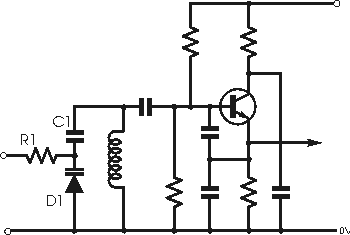Combat ! [ Combat to take as much knowledge as you could, these are simple engineering applicaions
we need to use these things and earn money, that's the real combat ].
I didn't knew anything about the tunneling diode when I post already. Then I went to the library,
internet and have wasted around 4hrs completely dedicated to the tunneling.So these are my
path footsteps that I have went, suggest you to follow my footsteps if you like to learn this all
in 1/2hrs like time.
Start read from here --V-[continues the uncompleted part of my note.
So that part continues here.]
Before we use tunnel diode we need enough understand of it's theoretical background.So that background
continues down here.
1. Theoretical Background.
The tunnel diode is based on the principle of tunneling. But tunneling is based on the
Heisenberg uncertainty principle, Simply,
if you know all the kinetic information about a particle at a known time , you only can give a probability about it's
kinetic information a t+ small_time.
For a example you can't take a map of a atom and said that electron will be there at a particular known
time. Only you could give a probability map.You could only say the probability of the electron at a given time.
So based on that what's tunneling. Suppose you hitting a wall with a ball , but ball does not have enough
kinetic energy to break the wall and pass through it, but there is a less probability that ball can pass through
the wall and exist on the other side. See this video -V
[media]http://www.youtube.com/watch?v=cTodS8hkSDg[/media]
So now you know what's tunneling , now you are ready to watch this video.
This video explains the function of a tunneling diode using the tunneling, and this video does not
explain the tunneling.
[media]http://www.youtube.com/watch?v=Fuy1ow7LQ94[/media]
Now,you know how it work. now the fun part comes in. Applications [Since I'm BTech Student].
Applications
There are many applications in tunneling, But here I'm going to mention the applications related to
electronics.
1. Computer EEPROM/EPROM/PROM memories.
2.TFET ( Tunneling Filed Effect transistor) and Quantum transistor.
3. Switches and sequential logic, combination logic,hi-speed SRAM. (some are excremental).
4. CCD Cameras and high precision sensors.
5. Tunnel Diode.
and also have a disadvantage in VLSI frabrication which leads to increase the current leakage.
and many more applications outside electronics.
Applications Inside Electronics and Inside Tunnel Diode.
1. Oscillators.

More stable Xtal oscillator configuration are exists.
But I didn't find that configuration on internet. You better find that book and refer it. It's worth reading it.
And the above method is just a relaxation oscillator.
Where the negative trans conductance let us to make that.
2. High Speed Switching.
3. Combinational Logic circuits [Gates] -high speed.
4. Sequential Logic and memory.
[2][3][4]The circuit configuration exists on that book ,I searched on internet but unable to find it for ya.
Now we have introductory level knowledge about it. Now it's time to run into the math and signal analysis.
I'm not yet skilled enough to do that. So I'll leave the discussion to SevenZero or Neo to continue from
here.
Hope you enjoyed your 1/2 hrs.
--Thanks Reading This--

